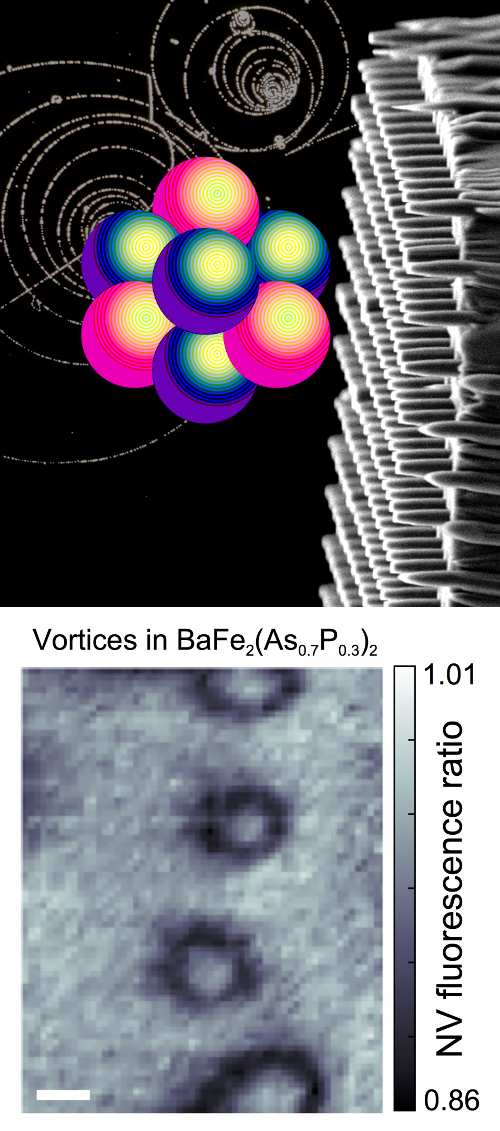Photon pics reveal the invisible
 Engineers have used a single atom as a camera, snapping images of nanoscale materials.
Engineers have used a single atom as a camera, snapping images of nanoscale materials.
The radically new sensor technology can capture images with a nanometre-scale resolution and a stunning degree of sensitivity.
Under the microscope, the single-spin quantum sensor resembles a toothbrush.
Each “bristle” contains a single, solid nanofabricated diamond crystal with a special defect (called a nitrogen-vacancy (NV) centre) located at the tip.
Two adjacent atoms are missing in the diamond's carbon lattice, and one space has been filled with a nitrogen atom.
This allows the device to sense specific material properties, particularly magnetism.
The team chose to test it on a fairly well-studied superconducting material containing magnetic structures called vortices - separate regions of magnetic energy.
The researchers from the University of California say their atom camera was able to capture images of individual vortices.
It means that experts will get able to get a picture of certain quantum elements for the first time.
“Our tool is a quantum sensor because it relies on the bizarreness of quantum mechanics,” physicist Ania Jayich explained.
“We put the NV defect into a quantum superposition where it can be one state or another - we don't know - and then we let the system evolve in the presence of a field and measure it. This superposition uncertainty is what allows that measurement to occur.”
Such quantum behaviour is often associated with low-temperature environments.
“This is the first tool of its kind,” Jayich said.
“It operates from room temperature down to low temperatures where a lot of interesting physics happens. When thermal energy is low enough, the effects of electron interactions, for instance, become observable, leading to new phases of matter. And we can now probe these with unprecedented spatial resolution.”
The quantum instrument operates from room temperature, all the way down to 6 Kelvin (minus 267°C).
“A lot of other microscopy tools don't have that temperature range,” Jayich explained.
“Further highlights of our tool are its excellent spatial resolution, afforded by the fact that the sensor comprises a single atom. Plus, its size makes it non-invasive, meaning it minimally affects the underlying physics in the materials system.”
With barely a moment’s rest, the team has now taken on the task of imaging skyrmions - quasiparticles with magnetic vortex-like configurations.
These odd elements have massive appeal for future data storage and spintronic technologies, but the researchers say they need to know more.
“There are a lot of different interactions between atoms and you need to understand all of them before you can predict how the material will behave,” Jayich said.
“If you can image the size of the material's magnetic domains and how they evolve on small length scales, that gives you information about the value and strength of these interactions,” she added.
“In the future, this tool will aid in understanding the nature and the strength of interactions in materials that then give rise to interesting new states and phases of matter, which are interesting from a fundamental physics perspective but also for technology.”








 Print
Print